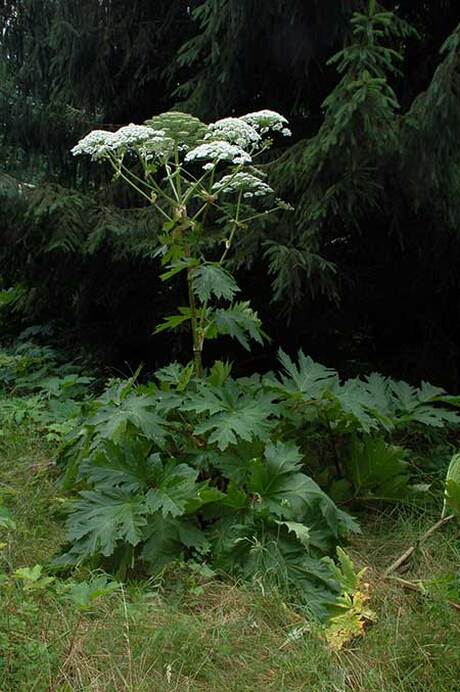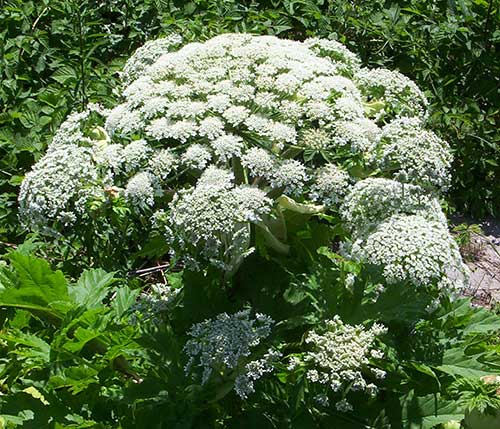Pest or guest of the month
|
This monthly selection offers a description of some of Warriston's beasty and 'beastly' inhabitants and advice on how to live with them organically. Find more in our Pest or Guest archive |
August 2019—Giant HogweedAB, east side
The giant hogweed is indeed fairy tale high, but has a sting in its tale. Originating in Southern Russia and Georgia (introduced in the 19th century), the nobly named Heracleum mantegazzianum can reach skywards 10 feet with a 2 foot wide lacy white flower. Related to the more delicate cow parsley, it is truly magnificent. But looks deceive. It is invasive to other plant life and worse for us, its sap causing severe burns and photosensitivity (the skin becomes over sensitive to sunlight). Four giant hogweed types have been identified in Britain, all of which carry this health warning. Attracted to areas around woodland, waterways it is usually biennial (there is one perennial type), spreading by seed before retreating underground in winter. Local authorities were given powers to remove giant hogweed in 1981 and Edinburgh City check allotment sites for its presence at least once a year, using chemical control if discovered. If you do find it on your plot and would like to get rid of it manually, then precautions must be taken seriously. Always wear gloves. Cover your arms and legs and ideally wear a face mask. Cut plant debris, contaminated clothing and tools are all potentially hazardous. Wash immediately any skin that comes into contact with the plant. Then, during May, loosen with a fork and pull young plants up when the soil is moist. Never use a strimmer as this can distribute hogweed bits around your plot. The plants can also be treated with a glyphosate weed killer at this time of year (if using remember to cover any other plants close by). Plants must not be put into garden waste bins, but you can safely compost it so long as it is not setting seed. Given its reputation however, you may prefer to burn. If the plant has grown to full size, you can contact Warriston Committee or the Edinburgh City Allotment Officer to arrange disposal. For more details go to: www.rhs.org.uk/advice/profile?pid=458 Photo credits: Top: By own work by Appaloosa - Uploaded to de.wikipedia 15:20, 20. Jun 2005 . . Appaloosa (380788 Byte) (Hauptdolde mit Nebendolden Quelle: selbst fotografiert GFDL), CC BY-SA 3.0, https://commons.wikimedia.org/w/index.php?curid=193926 Bottomt: By Fritz Geller-Grimm - Own work, CC BY-SA 3.0, https://commons.wikimedia.org/w/index.php?curid=5595612 |

Giant hogweed aka Heracleum mantegazzianum
|



